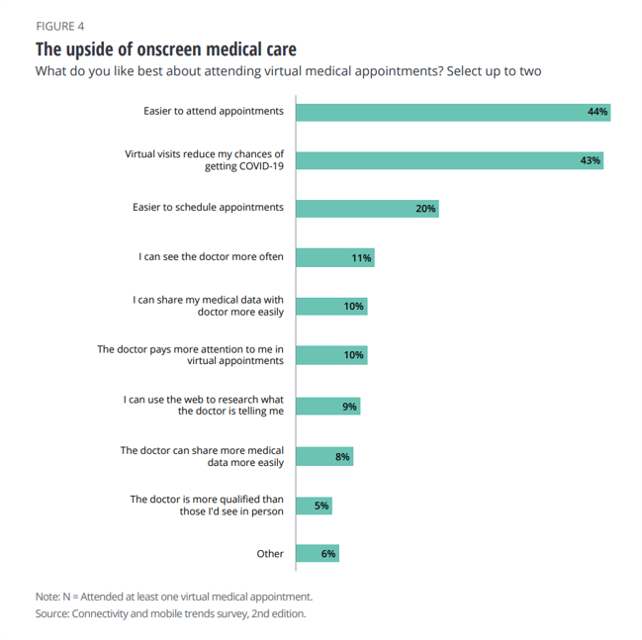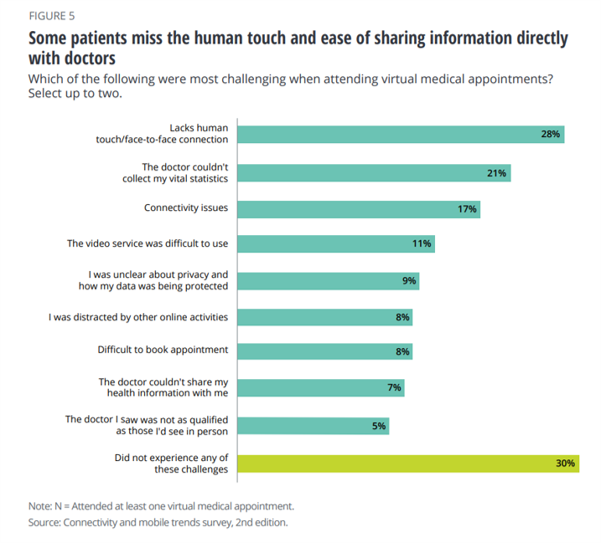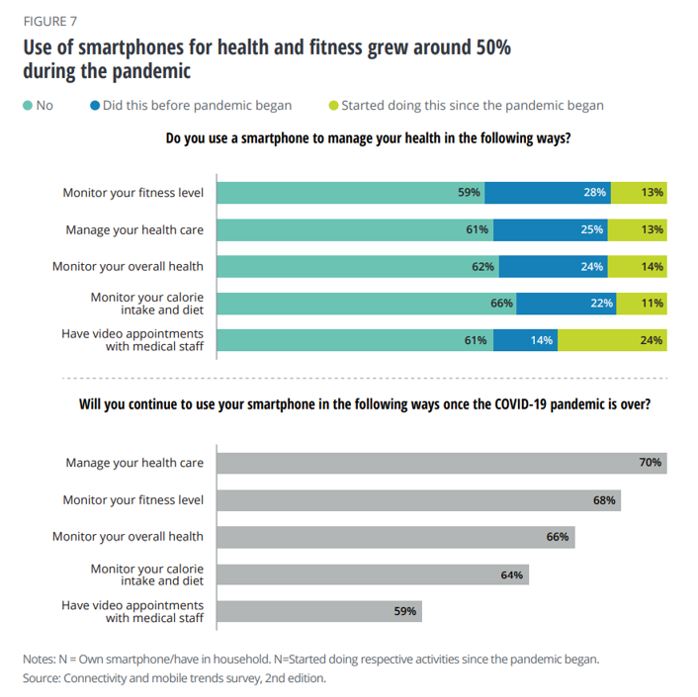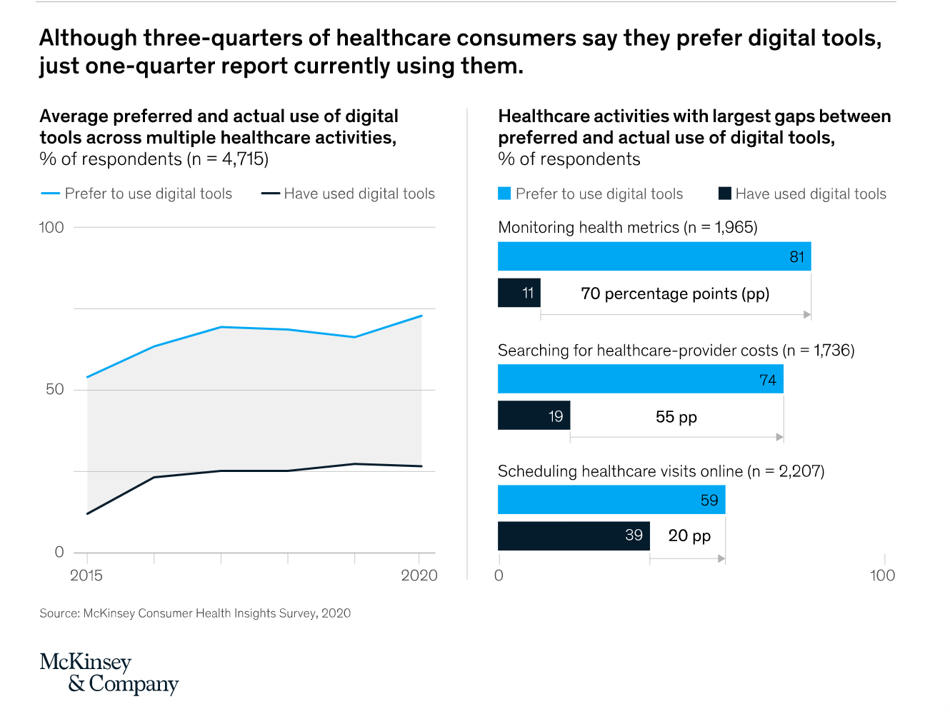Wherever you live in the world touched by the coronavirus pandemic, you felt (and were) stress-tested.
Both you were, and your home was as well.

In this year’s 2021 annual report by Deloitte into Connectivity & Mobile Trends, their report details How the pandemic has stress-tested the crowded digital home.
This analysis was done, as it is every year, by the Deloitte Center for Technology, Media & Telecommunications.
Deloitte’s Center commissioned an online survey among 2,009 U.S. consumers to gauge five generations of peoples’ perspectives on connected life in the context of COVID.
The report covers the various life-flows of our repurposed “crowded digital homes,” including school remote work, and making health, wellness, and fitness where we live.
I’ll focus on these latter aspects in this post, but check out the full report that covers a lot on technology and human factors leveraged and impacted by what Deloitte terms our collective “COVID-19 beta test.”
In the U.S., both patients-consumers and the health system pivoted to virtual health care encounters in the early phase of the pandemic.
A year after the first COVID-case emerged in the U.S., one-half of consumers said they best like their ability to engage in virtual medical appointments and nearly one-half appreciated risk-managing their potential exposure to the virus, shown in the first chart (Figure 4). One in five people liked ease in scheduling virtual appointments.
 On the downside, consumers pointed to a lack of face-to-face connection and/or human touch (28%), the inability to collect vital statistics (21%), and connectivity issues (17%) as the top challenges when engaging in virtual medical appointments.
On the downside, consumers pointed to a lack of face-to-face connection and/or human touch (28%), the inability to collect vital statistics (21%), and connectivity issues (17%) as the top challenges when engaging in virtual medical appointments.
One-third of consumers experienced none of the challenges on Deloitte’s list. Among the least likely barriers were unqualified clinicians (compared with a “live” in-person doctor), the doctor’s inability to share health information with the patient, difficulty in booking an appointment, distractions from other online activities, and privacy issues.
Note that “human touch” came before “connectivity issues.”
In another part of the study, Deloitte notes that for many people, human factors are the top challenges when working and schooling from home. On the human factor front, key challenges for people in the #StayHome era included not being able to meet face to face with colleagues, clients, or classmates and teachers. For students distractions with non-school online activities were a challenge.
Connectivity issues such as slow home internet as well as videoconferencing problems impacted about 11% of consumers, both those at work and at-school-at-home.
 Health Populi’s Hot Points: One of the fastest-growing areas of digital health that grew in the COVID-19 pandemic was use of smartphones for health and fitness. Deloitte found that U.S. consumers’ smartphone use for managing health grew by 50% during the public health crisis.
Health Populi’s Hot Points: One of the fastest-growing areas of digital health that grew in the COVID-19 pandemic was use of smartphones for health and fitness. Deloitte found that U.S. consumers’ smartphone use for managing health grew by 50% during the public health crisis.
Figure 7 from the report illustrates the various health-flows people adopted in 2020-21, among people who own smartphones in their households:
- 24% used a video appointment with a health care professional for the first time during the pandemic, with another 14% continuing to do so
- 14% monitored overall health via smartphone in the pandemic, expanding from 24% of people doing so pre-COVID
- 13% both adopted smartphones for fitness and managing health care, growing from a base of 28% (fitness) and 25% (health care) pre-pandemic
- 11% began to monitor calories via phone in the age of COVID, expanding from 22% doing so pre-pandemic.
In the bottom half of this chart, we see likelihood of people persisting using smartphones for health by category, with managing health care at the top at 70% of consumers, followed by 68% who intend to monitor their fitness level, 66% to monitor overall health (in terms of wellness, not a health condition), 64% tracking calories, and 59% continuing to use telehealth via their phones.
 A new study published in June by McKinsey & Company’s looked at How COVID-19 has changed the way US consumers think about healthcare.
A new study published in June by McKinsey & Company’s looked at How COVID-19 has changed the way US consumers think about healthcare.
McKinsey’s findings contrast with Deloitte’s, taking a look back on the coronavirus pandemic impact on peoples’ health care lives and life-flows.
This last chart from the McKinsey report attests that three in four consumers say they prefer digital health tools across health care activities.
However, only one-fourth currently uses them, based on McKinsey’s consumer survey conducted in 2020. The timing of that survey precedes Deloitte’s fielded timing in March 2021, which may explain some of the difference between consumers use in 2020 versus 2021.
Looking at the right side of the chart, note the pent-up demand for those who have used digital health tech versus those who would prefer to use them. There are large gaps for health monitoring (say, for blood pressure or blood glucose), searching for healthcare provider costs (via transparency programs implemented by hospitals, physicians and clinics), and scheduling visits online.
We have been COVID-19 stress-tested, and as a result, many more consumers have tasted virtual health care and like it….even prefer it.
To close the gaps between desire to use and actual use, we’ll need to buckle into our user-centered design roles, bake in value and consumer values into our products and services, and embed empathy and humanity to scale high-touch wherever we can.
